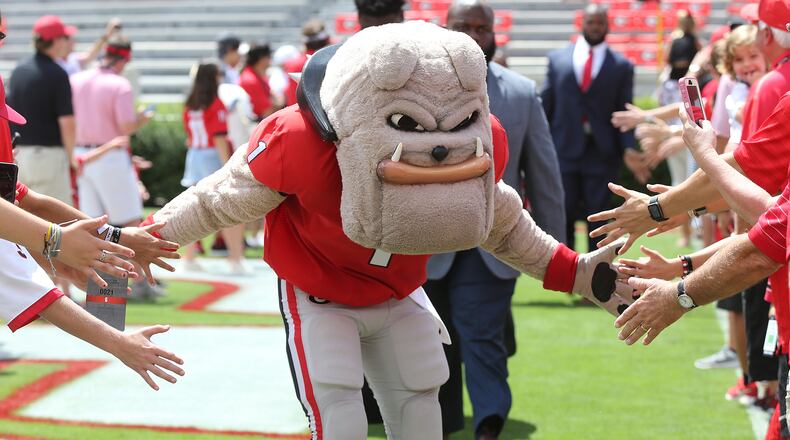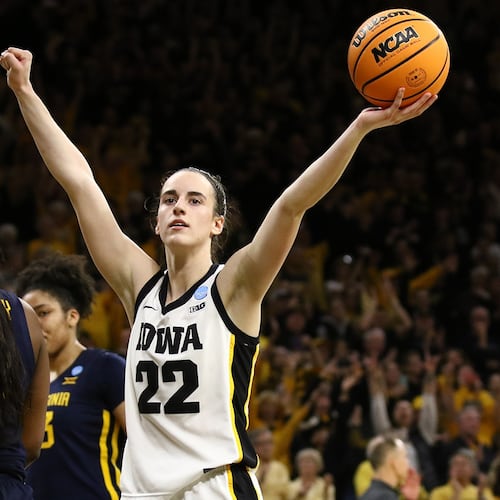Two months ago, the belief in college football circles was that there would be a 2020 season of some sort. Two weeks ago, the consensus was that there wouldn’t. There’s a bit – a BIT, we emphasize – more optimism today. Let’s say it’s it 40-60 against playing this fall. This time last week, it was more like 20-80.
The latest shift has to do, duh, with COVID-19. This week’s virus stats aren’t quite as grim. College bigwigs have also noted that the number of players testing positive has declined. The caveat: Campuses haven’t yet opened for all students – just certain athletes. And one slightly less awful week won’t mean anything if the next three are bad, worse and worst. That said, some hope for toe meeting leather in 2020 remains.
The week’s most intriguing development was the Pac-12′s decision – as reported by Jon Wilner of the Mercury News – to adopt a 10-game conference-only schedule with games beginning Sept. 19, as opposed to Labor Day weekend. As it stood, the week ahead figured to be a time for some of the bigger leagues, the SEC and ACC among them, to turn thumbs-up/down on a fall season. The Pac-12 opting to push things back could leave broad ripples.
(Speaking of which: That used to be the name of a high school in Indianapolis. Mike Woodson went to Broad Ripple. So did David Letterman.)
Georgia athletic director Greg McGarity said Aug. 1 loomed as the day of decision. The Pac-12 example could impel everyone to take a couple of more weeks to determine what’s what. Teams wouldn’t need to start practice so early in August if they weren’t scheduled to play until mid-September. Not so long ago, we figured that the clock/calendar was working against college football; the feeling today is that waiting is the best thing the sport could do, provided it wants to play football before 2021, which absolutely all the Power Five folks do.
Say this for the P5ers: They’re trying to make this work. They’re trying, though there’s every chance the virus will render every workaround inoperative. Of the Power Five, only the Big Ten and Pac-12 have said they’ll play conference-only schedules. If Sept. 19 is indeed the new opening day, the other three leagues will have to fall in line. Then there would have to be some adjustment on the other end.
The College Football Playoff has said it will do anything it can to accommodate those who feed the CFP. A notion beginning to make the rounds has the Power 5 pushing its conference title games from Dec. 5 to Dec. 12 or even Dec. 19. That would mean moving almost directly into a playoff – the semifinals are set for New Year’s Day – and not skipping the bulk of December. The sport would take that in a nanosecond if it could crown a national champion come January.
The great unknown/unknowable is whether the virus will allow it. Nobody wants to stop a season after it starts. If college football were to halt in, say, November, it might not get going again until April, at which point getting going wouldn’t make much sense. Sports are skittish about playing deep into autumn because of the fear/expectation that the virus will hit hardest then. Pushing the college football season back, even by two weeks, heightens that risk.
The alternative is to stick to the Labor Day opening, which the Pac-12 has just said it won’t do and which might make for a different play-or-don’t-play decision than could in good conscience be made next week. It’s possible that the SEC and ACC will stick to their timetable, say “We’re playing” and hope nothing happens before September to dissuade them. It’s also possible that a choice made in mid-August would be more reasoned and therefore more sagacious.
The midsummer spike changed the landscape. It would be nigh-impossible to play college football if the numbers stay as they’ve been. Waiting two weeks to see if those numbers improve wouldn’t constitute dallying; on the contrary, it would represent due diligence.
Waiting two weeks might save the season. It also – full disclosure – might not.
About the Author
The Latest
Featured



